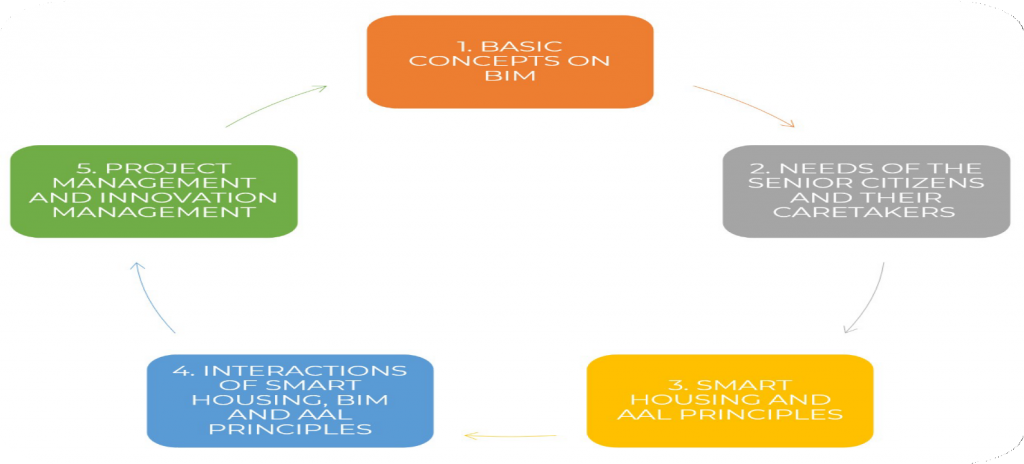Current Work Update
During the last months, ESSENSE has developed its Educational Philosophy and Joint Curriculum. You can find the full summary in here.
The Joint Curriculum defines the necessary knowledge and skills components regarding key principles of BIM; Smart Housing and Ambient Assisted Living (AAL). It covers different aspects related to CAD Design, sensors architecture and BIM management with training tools, didactic materials and eLearning environment to address the different profiles of learners in a target-oriented way.

The Joint Curriculum is divided into 5 modules:
- Basic concepts on Building Information Modelling
The objective of the unit „Basic Concepts on BIM“ is to obtain an overview of the definition of BIM and the possible uses. What are the advantages of BIM or computer-aided design concerning the data associated with the 3D objects.
- The needs of the senior citizens and their caretakers
The unit “The needs of the senior citizens and their caretakers” aims to prepare building designers, construction workers, and related professionals to make design decisions that support healthy active ageing, and to implement those solutions in new buildings and refurbishments by focusing on user-centred design approaches.
- Smart Housing and AAL
This unit’s purpose is to introduce the concept of AAL and Smart Housing to the students. Furthermore, this unit will allow students to get insights into the basic principles of sensing, sensor data acquisition, signal processing and modelling based on data, to design and implement applications for assisting older adults.
- Interactions between BIM, Smart Housing and AAL
As a goal, this unit “Interactions between BIM, Smart Housing and AAL” aims to introduce the student to using AAL principles and Smart Housing technologies within the BIM method. How to combine the principles of Ambient Assisting Living with the concept of Building Information Modelling.
- Project Management, Innovation Management and collective competencies for optimum implementation of BIM principles and AAL concepts.
Module 5 comprises all the necessary knowledge for the implementation of BIM methodology from an Innovation Management approach. This module will provide learners with different concepts and methodologies to make the most of the implementation of BIM.
These modules will be freely available at the end of the project in 2021 on the ESSENSE Collaborative Platform with innovative quizzes, exercises and some extra lectures.


